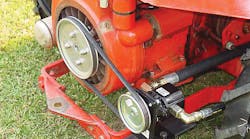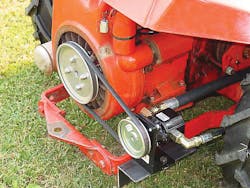Whether input power comes from an electric motor, gasoline or diesel engine, or PTO on a transmission, hydraulic pumps typically are driven through an industry-standard flange. This arrangement ensures that the mating shafts are always aligned and that no side load is transmitted to the pump’s input shaft.
But sometimes you have no choice — especially with retrofits. If you are considering driving a hydraulic pump through a belt drive, you’ll find a wealth of information about overhung load in a free technical paper from Gates Corp., Denver. The paper explains overhung load, how it is calculated, its detrimental effects on shafts and bearings, and how to reduce or eliminate it.
Click here to download a free copy of “How Belt Drives Impact Overhung Load.”


